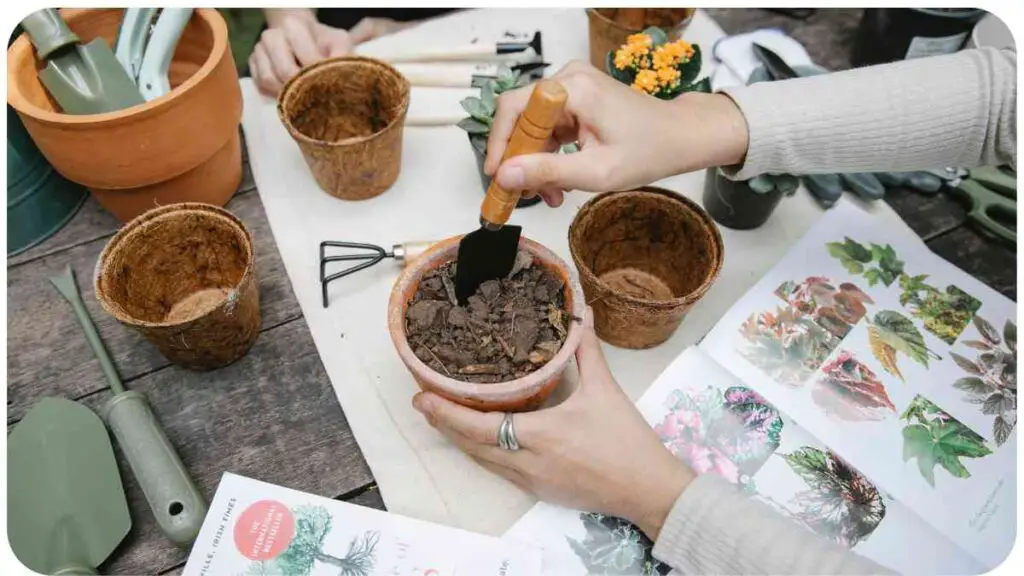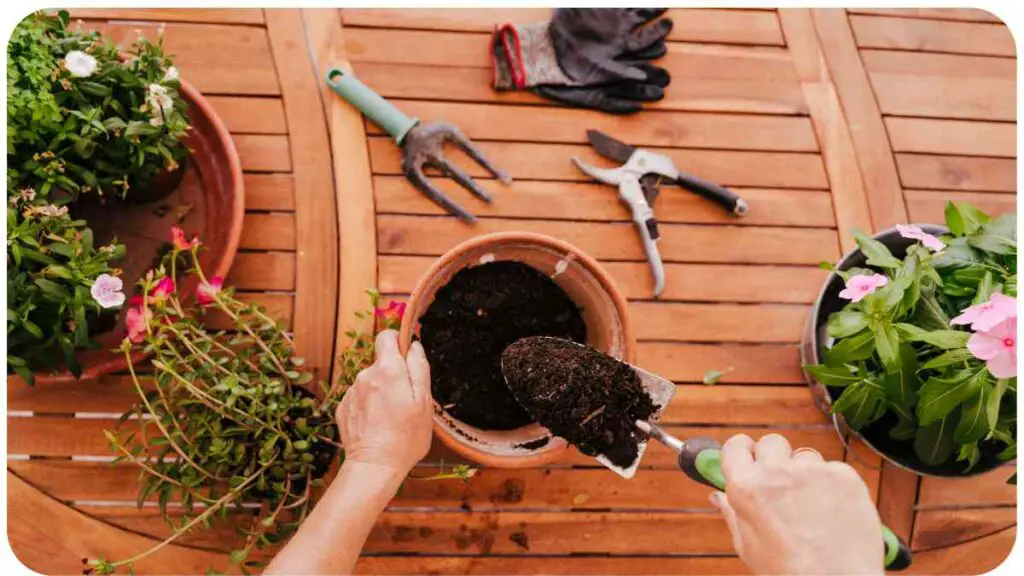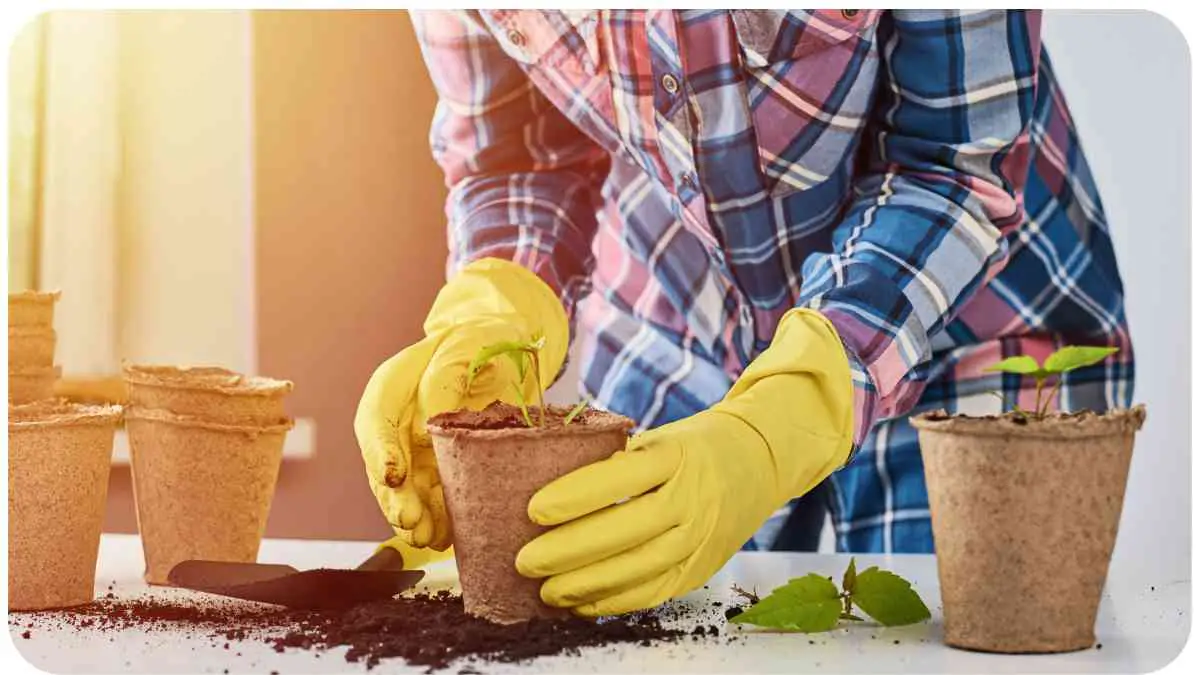Toxoplasmosis is a word that might sound intimidating, especially if you’re a plant lover! It’s important to understand what this condition is, how it spreads, and whether potting soil could be a potential source.
If you’re wondering, “Is toxoplasmosis in potting soil?” you’re not alone. Many gardeners and plant enthusiasts worry about this parasitic infection that can come from various sources, including soil.
In this article, we’ll dig deep into the details of toxoplasmosis, explore its connection to potting soil, and share practical tips on how to keep your gardening endeavors safe and enjoyable. So, let’s get started!
| Takeaway |
|---|
| Toxoplasmosis is caused by the Toxoplasma gondii parasite, often found in contaminated soil or cat feces. |
| Pregnant women and individuals with weakened immune systems are at higher risk of infection. |
| Proper gardening hygiene, like wearing gloves and washing hands, can minimize exposure to the parasite. |
| Cooking soil at a high temperature can kill the Toxoplasma gondii parasite before use. |
| Keeping cats indoors and maintaining a clean litter box can help reduce the risk of toxoplasmosis. |
| Regular vet check-ups for pets can ensure they are healthy and not shedding the parasite. |
| If you suspect you have been infected, seek medical attention for testing and treatment. |
| Educating yourself and taking precautions while gardening can significantly reduce the risk of infection. |
| Using quality potting soil from reputable sources can lower the chance of contamination. |
| Awareness of the risks associated with gardening, especially for at-risk groups, is essential for safety. |
What is Toxoplasmosis?

Toxoplasmosis is an infection caused by a parasite called Toxoplasma gondii. This parasite is particularly interesting because it can infect a wide range of animals, including humans. Most of the time, people don’t even realize they have it since the symptoms can be mild or non-existent. However, it can be serious for pregnant women and people with weakened immune systems.
Creating frozen treats at home for your dog is a simple way to help them cool down in the summer. These homemade frozen dog treats provide tasty, healthy options that your pup will love, ensuring they stay hydrated and happy.
Why Should You Care?
As a gardener or someone who loves working with soil, understanding toxoplasmosis is crucial. While the risk is relatively low, being informed can help you take necessary precautions to protect yourself and others.
How Toxoplasmosis Spreads
Understanding the Toxoplasma Gondii Parasite
Toxoplasma gondii is a single-celled organism that typically resides in the intestines of cats. When cats excrete feces, they can release thousands of oocysts, which are the eggs of the parasite. These oocysts can contaminate the soil, water, and even plants in the area.
Common Transmission Routes
Here’s a quick rundown of how people usually get infected with Toxoplasma gondii:
| Transmission Route | Description |
|---|---|
| Ingesting Oocysts | Commonly occurs through contaminated food or water, but can also happen with soil that contains oocysts. |
| Handling Cat Litter | Direct contact with cat feces that contain oocysts is a significant risk factor. |
| Eating Undercooked Meat | Oocysts can also be present in raw or undercooked meat from infected animals. |
Understanding these routes helps in recognizing potential risks in gardening or handling potting soil.
Can Potting Soil Contain Toxoplasmosis?
Sources of Toxoplasma in Soil
Yes, potting soil can potentially contain Toxoplasma gondii if it has been contaminated with cat feces or if it has come into contact with infected soil. It’s not just garden soil; even commercially produced potting soil can pose a risk if it was contaminated during processing or transport.
Maintaining a lush, green lawn in your backyard doesn’t have to be difficult. By investing in a backyard putting green, you can create an enjoyable, low-maintenance area that’s perfect for golf enthusiasts, providing hours of entertainment without the hassle.
Risk Factors for Gardeners
If you’re an avid gardener, you should be aware of a few risk factors. For instance, if you have outdoor cats or if you frequently handle soil without protective gear, your risk of exposure increases.
| Risk Factor | Description |
|---|---|
| Presence of Cats | Cats in the area can increase contamination risk. |
| Soil Handling Practices | Not using gloves or washing hands after gardening can expose you to oocysts. |
| Eating While Gardening | Snacking without washing hands can lead to accidental ingestion of contaminants. |
It’s essential to keep these factors in mind to protect your health.
Signs and Symptoms of Toxoplasmosis
Most people with toxoplasmosis experience mild flu-like symptoms, or they might not have any symptoms at all. However, some common signs include:
- Fatigue
- Muscle aches
- Fever
- Headaches
In severe cases, especially in individuals with compromised immune systems, symptoms can escalate, leading to complications like pneumonia or damage to the brain and eyes.
Preventing Toxoplasmosis from Potting Soil

Best Practices for Handling Soil
If you love gardening, consider these best practices to minimize your risk of toxoplasmosis:
- Use gloves when handling potting soil.
- Wash hands thoroughly after gardening.
- Avoid eating or drinking while working in the garden.
Using Gloves and Other Precautions
Wearing gloves is one of the simplest and most effective ways to protect yourself. Make it a habit to put on gloves before you dig into that potting soil. It’s like putting on armor before heading into battle, better safe than sorry!
Gardening doesn’t require a huge yard. If you want to start growing fresh herbs, you can create a compact, efficient herb garden in your backyard that enhances your meals and offers you the convenience of harvesting herbs right from your own space.
| Precaution | Description |
|---|---|
| Gloves | Always wear disposable or reusable gloves when handling soil. |
| Handwashing | Wash hands with soap and water immediately after gardening. |
| Cover Cuts and Scrapes | Protect open wounds to avoid infection. |
By implementing these strategies, you can enjoy your gardening activities without unnecessary worry.
Testing Soil for Toxoplasma
Methods of Soil Testing
If you’re concerned about toxoplasmosis, you can test your soil for the presence of Toxoplasma gondii. Several laboratories offer testing services, and you can typically find instructions for sampling your soil on their websites.
What to Do if Toxoplasma is Detected
If your soil tests positive for toxoplasmosis, don’t panic. Here’s what you can do:
- Avoid using that soil for edible plants.
- Consider sterilizing the soil by heating it in the oven or microwaving it.
- Contact local health authorities for guidance on safe disposal.
How to Safely Use Potting Soil
Using potting soil safely is about being informed and taking precautions. Always choose high-quality, reputable brands when purchasing soil, and avoid using soil from questionable sources.
- Opt for sterile potting mixes to reduce risk.
- Store soil in sealed containers to prevent contamination.
- Keep gardening tools clean and disinfect them regularly.
Toxoplasmosis and Pets
Cats as a Primary Host
Cats are the primary hosts for Toxoplasma gondii, and they can shed oocysts in their feces. If you have a cat, it’s important to take some extra steps to protect yourself and your gardening endeavors.
Caring for Your Pet to Reduce Risk
Here are some tips for pet owners:
- Keep litter boxes clean: Clean the litter box daily and wash your hands afterward.
- Limit outdoor access: If possible, keep cats indoors to minimize their chances of picking up the parasite.
- Regular vet check-ups: Ensure your pets are healthy and free from parasites.
Conclusion
In summary, while the risk of toxoplasmosis from potting soil exists, being informed and taking simple precautions can significantly reduce your chances of exposure. Remember, gardening should be a joy, not a source of anxiety. By following the best practices outlined in this article, you can cultivate your plants while keeping yourself and your loved ones safe.
Further Reading
- Gardening Caution Urged for Pregnant Women
This article discusses the precautions pregnant women should take when gardening, particularly concerning the risks of toxoplasmosis. - Digging into Toxoplasmosis
A detailed exploration of toxoplasmosis, its transmission, and practical tips for gardeners to avoid infection. - Environmental and Health Risks of Toxoplasmosis
A scientific overview of the environmental and health risks associated with toxoplasmosis, providing a deeper understanding of the topic.
FAQs
What is toxoplasmosis, and how can I get it from potting soil?
Toxoplasmosis is an infection caused by the parasite Toxoplasma gondii. You can contract it from potting soil if it’s contaminated with cat feces containing the parasite’s oocysts.
Are there specific groups at higher risk for toxoplasmosis?
Yes, pregnant women and individuals with weakened immune systems are at higher risk. It’s crucial for these groups to take extra precautions when gardening.
How can I tell if my cat is shedding Toxoplasma?
Cats typically don’t show symptoms, but if they have outdoor access, they may shed oocysts in their feces. Regular vet check-ups can help ensure your cat is healthy.
What should I do if I think I have toxoplasmosis?
If you suspect an infection, consult a healthcare provider for testing and advice. Early diagnosis and treatment can prevent complications.
Can I still garden if I have pets?
Yes, you can garden safely with pets by taking precautions such as keeping litter boxes clean, washing your hands frequently, and wearing gloves while handling soil.

For 15 years, Hellen James has worked in the gardening industry as an expert and landscape designer. During her career, she has worked for a variety of businesses that specialize in landscaping and gardening from small firms to large corporations.

